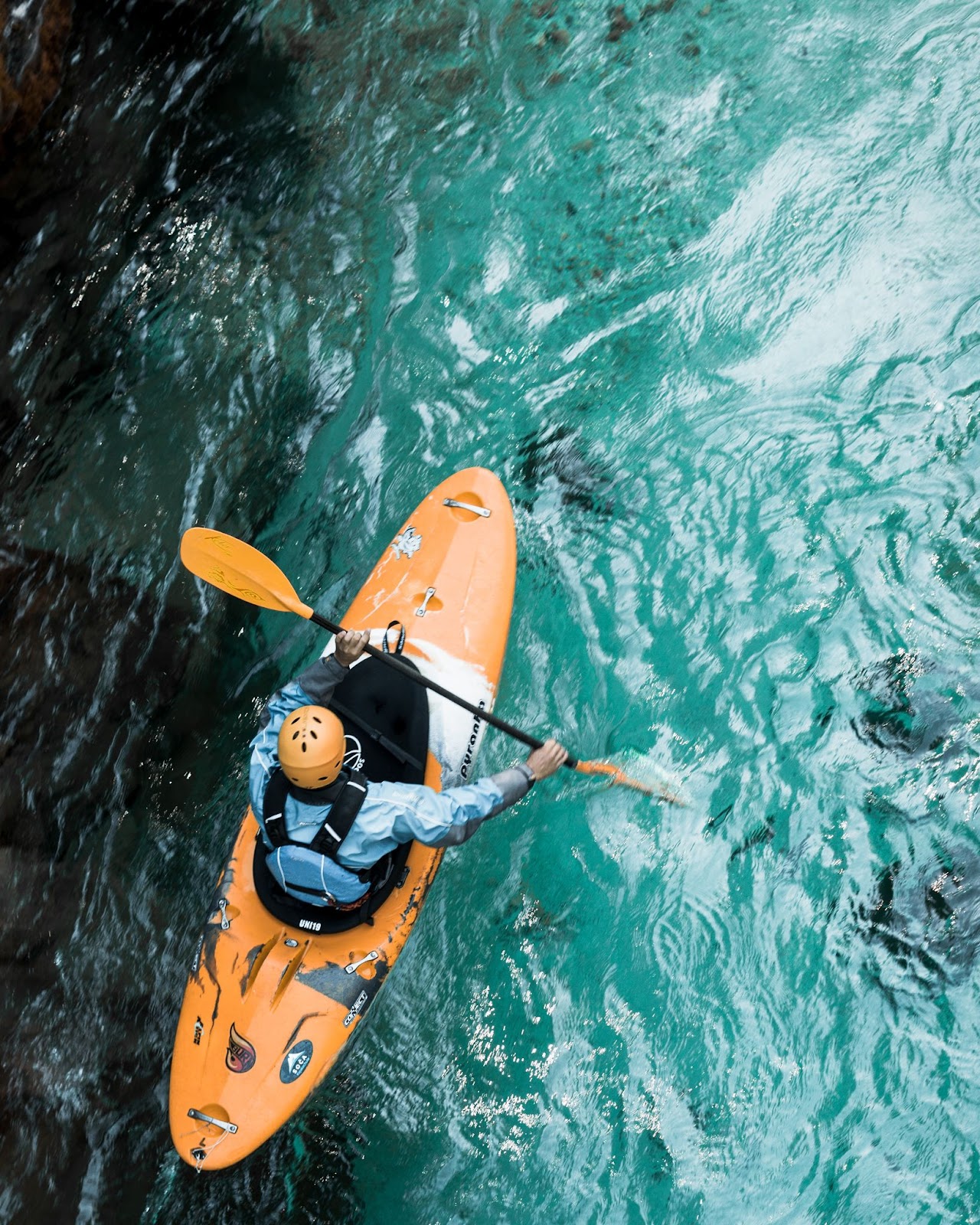Kayaking is a popular recreational activity and is a great way to explore coastal areas, lakes, rivers, and even whitewater. One of the most important factors when it comes to choosing the right kayak is finding one that suits your weight and size. Kayaks come in many different sizes and shapes with varying limitations on weight capacity which can make choosing the right one overwhelming. Before you make your purchase, it’s important to understand the safety regulations related to kayaking and determine what the optimal weight capacity is for you.
This guide will answer frequently asked questions such as: Is there a weight limit for kayaking? What factors do I need to consider when selecting a kayak? Which materials are appropriate for my weight? What type of beginner kayak would be best for me? We’ll also discuss basic tips on how to stay safe while out on the water, so that you can get the most out of your time in the great outdoors.
Is There a Weight Limit For Kayaking
Before you decide on the right kayak for your weight, it is important to consider how much weight you can safely and comfortably fit in a kayak. Kayaks have a weight limit, depending on the make and model, and it is important to make sure that you are aware of the weight limit before making a purchase. Furthermore, it is important to consider the weight of any equipment, such as a life jacket or a paddle, you will be bringing with you on your trip. This article will help you determine the right kayak for your weight and any additional gear you will be carrying.
Determine Your Weight And Size
When choosing a kayak it is important to consider your weight and size. Generally, the higher the weight capacity, the larger and more stable the kayak will be. However, there is a trade-off between stability and speed. The heavier your kayak, the slower it will be in the water. Kayaks are usually rated for specific types of waters — like Class I flatwater rivers or Class V white water rapids — so make sure you choose one that can accommodate your body type on the type of water you plan to paddle on. If you are on a budget, consider looking for a used model instead of investing in a new one. Brands vary in quality, so use caution when selecting from second hand stores or websites like Craigslist or eBay. Do your research before purchasing!
When choosing between different sizes of kayaks, focus on comfort and stability over speed. If you are larger or heavier than average for your height but only plan to paddle flatwater streams and lakes at an easy pace, then it’s okay to select a bigger boat if it means increased comfort while paddling. Smaller boats work best for smaller individuals that want greater agility and agility in calmer waters but should not be used by people over 155 pounds (70 kg).
Lastly, make sure that any kayak plans you may have include at least one personal floatation device appropriate to wear while navigating rapids or open waterways; preferably two devices shared between several ships when outfitting multiple passengers aboard one vessel together. In all cases safety must come first!
Consider The Kayak’s Weight Capacity
Before using any kayak, it’s important to consider the weight capacity and determine whether it will accommodate you and any equipment you plan to take with you. When selecting a kayak, keep in mind that weight capacities are usually based on well-distributed (evenly balanced) passengers. An experienced paddler can safely carry more than an inexperienced paddler so make sure you consider your experience level as well. Most recreational kayaks have a weight capacity of 225 kg – 400 kg (500 lbs – 900 lbs), even for those rated for small persons. It is important to understand what this rating means; it does not indicate the amount of cargo a single person can bring in the kayak, but rather the maximum load provided it is evenly distributed within the boat or between persons sharing the boat. For example: if two guests join one boat, its weight capacity should be split between them evenly; or if there is only one passenger, he/she should ensure his/her total load does not exceed half of the boat’s stated weight capacity. If a third passenger joins in at this stage, he/she needs to stay within their appropriate limit defined by dividing up half of the original weight rating amongst three passengers.
In addition to checking the kayak’s stated maximum load capacity, users should also ask questions about how far back they can sit in the boat and where they can confidently place any additional items they plan on carrying while out on adventures so as not to exceed maximum load thresholds on their specific model vehicle or risk sacrificing stability or maneuverability due to overloading certain parts of their crafts.
Types of Kayaks
When choosing the right kayak for your weight, it’s important to know what types of kayaks are available on the market. Kayaks can be divided into four types: sit-on-top, touring, white-water, and inflatable.
Each of these kayak types have different features, such as size, weight, storage capacity, and stability, which can affect how the kayak performs. Knowing what type of kayak is best for you can help you decide which kayak is the best for you and your weight.
Sit-in Kayaks
Sit-in kayaks offer excellent performance and protection in cold, choppy waters. They are the classic “go-anywhere” vessel and can handle a variety of conditions. Most sit-in kayaks feature a molded cockpit where your legs are enclosed along with a curved hull that helps to maximize speed, tracking and maneuverability. The sizing of this style of boat is based upon the weight and height of the paddler as well as their personal preference. For example, if you weigh more than 160 lbs (73 kgs), then you will likely be more comfortable in a larger sized boat with greater capacity. Conversely, if you weigh less than 160 lbs (73 kgs), you can opt for a smaller boat which will be easier to maneuver on the water. Although there is no specific “weight limit” for kayaking, it is important to keep in mind that different styles of boats can have different capacity levels. People who are taller or heavier may require a longer and wider boat with higher capacity for safety purposes as well as increased comfort on the water.
Sit-on-Top Kayaks
Sit-on-top kayaks are great for casual paddlers because they provide added security and more space than a traditional kayak. They are very popular amongst anglers as well, due to their stability and larger size. However, it is important to note that most sit-on-top kayaks have an upper weight limit which can vary depending on the manufacturer and design of the boat. As such, it is crucial to consider your own weight when considering the purchase of a sit-on-top kayak. Most sit-on-top kayaks can handle up to 275 lbs without compromising performance, but some manufacturers may offer models with higher or lower weight limits. The rule of thumb is that if you plan on carrying any extra gear or passengers in addition to yourself, then you should choose a model with a higher maximum capacity. That way you’ll be sure that everyone’s safety is accounted for no matter what kind of waters you’ll be navigating. For smaller paddlers (under 150 lb), most recreational sit-on top kayaks are an ideal choice as the extra buoyancy allows for them to carry heavier loads easily. While larger paddlers generally find adult sized touring boats and recreational Sit On Top models from 160 to 250 lb comfortable enough for extended tour. For heavier individuals looking for better maneuverability however, narrower boats like whitewater vessels with lower center lines might be more suitable given they can generally handle weights over 300 lbs without risking damage or instability.

It’s important not to overload your kayak as doing so will decrease performance and increase the risk of capsizing in rough water conditions; so make sure the boat you choose fits both your skill level and intended applications comfortably without preventing proper loading techniques needed for safe navigation on your next outdoor adventure!
Inflatable Kayaks
Inflatable Kayaks are the newest, most compact and portable form of kayaking. These kayaks are made from a PVC material which has been reinforced by an internal drop stitch. Due to their size, these kayaks are much easier to store and transport than traditional hard-shell kayaks. When fully inflated, inflatable kayaks can be anywhere from 10-14 feet long and 25-34 inches wide. Inflatable kayaks can be used both in lakes and rivers, so they are a great option for all levels of paddlers regardless of your weight—there is no weight limit for inflatable kayaks! An important factor to keep in mind when selecting an inflatable kayak is its max payload or how much weight the boat is rated to hold safely without affecting performance. Most manufacturers rate their boats with a 300 lb max payload while higher end models may range up to 500 lbs or more. Before purchasing an inflatable boat, make sure that you factor in your bodyweight plus any gear you intend on carrying on board into your decision making process as it will help ensure that you’re purchasing the right size boat for your needs.
Other Factors to Consider
When looking for the right kayak, weight limit is only one of the many factors to consider. Other factors include the type of water you will be kayaking in, the kayak’s stability, and the amount of storage space the kayak has. In this section, we will go over all of these factors and how they can help you determine the right kayak for you.
Kayak Length
In addition to the type and weight of kayak you choose, another important factor to consider is the length. Kayaks vary in length from 6 feet to upwards of 18 feet. The longer and narrower your kayak, the faster it will be in the water. However, if you are looking for stability and maneuverability, a shorter kayak may be more suitable for you. Shorter kayaks tend to have a better turning radius and are more stable in rough waters than their longer counterparts. Additionally, smaller boats are often easier to maneuver because they require less effort to move due to their lower weight capacity. It’s also important to consider what kind of body of water you anticipate spending most of your time in when deciding on a kayak length. If you will mostly be in larger bodies of water – such as lakes or vast rivers – then a longer boat will provide higher speed and better tracking ability than a shorter one. On the other hand, if your goal is primarily navigating smaller waterways – such as streams or creeks – then choosing a shorter boat could help keep control over tight turns and maneuver more quickly through tight spaces.

Kayak Width
The width of your kayak is another important factor to consider when selecting a kayak. Generally, narrower boats are faster and can track better over long distances, while wider boats are usually more stable. Wider kayaks typically have more room for supplies and may be more comfortable for larger paddlers. Depending on the design, some boats may perform well when wider or narrower than their intended range, so it is worth researching the boat and its recommended specs before purchasing.
It’s also important to understand that how wide a kayak is at its widest point will also depend on what type of water you will be paddling in as well as your own skill level. For instance, sea touring kayaks are typically wider for stability in choppy seas than recreational models or river running boat styles that need agility to navigate features along the water. When trying out different models, sit inside the cockpit of each boat and make sure you feel stable when rocking from side to side–keeping in mind that adding accessories like hatches or foot pegs can alter stability levels as well. Overall, look for a width range that feels just right for your body size and paddle style as this will ensure maximum efficiency and comfort.
Kayak Material
The material used to make a kayak can also affect its weight capacity. Though most recreational kayaks are made of plastic, there are other varieties to consider. Each offers its own advantages! Fiberglass kayaks provide great speed and maneuverability due to their lighter weight, yet offer comparable durability and stability at a lower price than composite options. However, their weight capacity is usually lower than that of their plastic counter parts due to the lighter materials used in construction. Composite kayaks are constructed from fiberglass over foam or Kevlar cores and offer some of the lightest and most durable options available on the market — however, they typically have a limited weight capacity as well as higher price tag. Inflatable kayaks are attractive options for people who might not have the space for storing a hard-shell yacht. Inflatable boats are cheap, floppy — yet strong to hold one or two paddlers comfortably while offering ample amounts of cargo enough storage space within the hull. Inflatables typically can only hold lesser weights but when you’re done using them they can be rolled up and taken with you wherever you need it!
Conclusion
In conclusion, choosing the right kayak for your weight is an important part of your kayaking experience. You want to make sure that you choose a kayak that is compatible with your weight so that you can enjoy a safe and comfortable paddling experience.
Remember to account for all factors such as paddling location, storage/transportation needs, skill level and budget when selecting the perfect kayak for you. Ensuring you have knowledge about what category of kayak works best for your body weight will ensure that all your kayaking experiences are pleasant, successful and enjoyable.




No Comment! Be the first one.